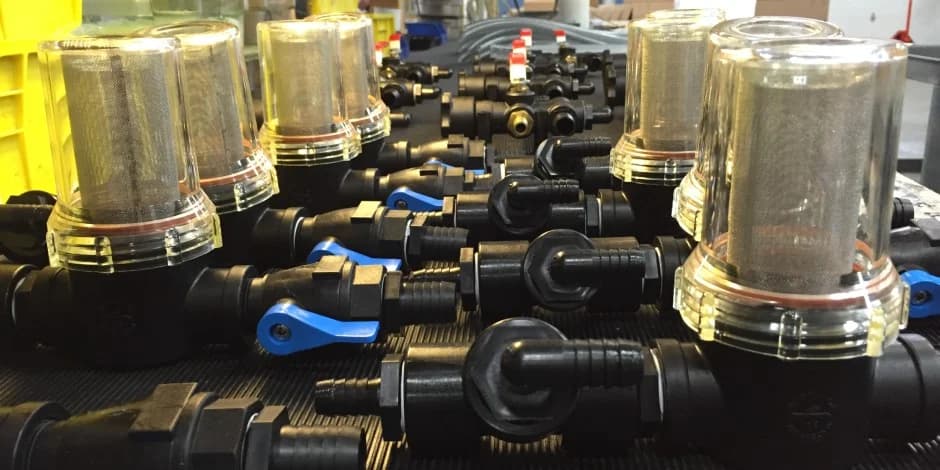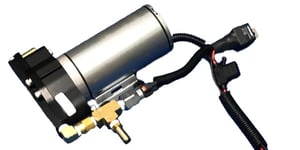The Pros and Cons of Self-Priming Pumps

Shawn Glover, VP of Sales, Feb 16, 2021

Operators of high-pressure pump equipment are well aware that a pump requires priming prior to operation. When you prime a pump, air is removed from the inlet tube, creating a vacuum and allowing the pump’s power to take up fluid and operate properly. But for jobs that require frequent starts and stops, the manual priming process can become a hassle.
Some water pumps, such as those used in wells or common sump pumps, are inherently self-priming because they are submerged in water, naturally displacing any air gaps, thanks to gravity. But what about industries that use equipment above a main tank of fluid?
Self-priming plunger pumps are desirable in these applications, especially for commercial uses like cleaning, agriculture, pest control, disinfection, and other industries that use high-pressure pumps. There are things every operator should know before investing in a self-priming pump, however.
Benefits of Self-Priming Plunger Pumps
To prime a standard centrifugal pump requires filling the pump through a priming port, which needs to be done each time it’s used. A main advantage of self-priming plunger pumps is not having to take the extra step of priming it every time you use your equipment, saving significant time and labor. A self-priming pump is also more conducive to handling fluids that might have different viscosities or be more corrosive than water, such as harsh chemicals used in cleaning, lawn care, or fertigation equipment.
A true self-priming pump works against gravity by compressing air to get it to move and draw up fluids. They don’t need to be submerged in liquid or located below a water tank; instead, they can operate laterally or above the level of the fluids being drawn through the pump. The ability to remain mobile and efficiently operate pumps in varying configurations and environments is perhaps the greatest benefit of self-priming pumps.
Troubleshooting Self-Priming Pumps That Won’t Prime
There is a misnomer about self-priming pumps, however. There are still some initial steps that need to be taken before operation. Plus, there are certain conditions where the priming function of a self-priming plunger pump may not operate as it should. Some assume there to be a defect in the pump itself when, in reality, there are likely outside factors that need to be addressed.
Wondering how to prime a pump that’s self-priming? The following are some troubleshooting tips for self-priming pumps.
Conduct Initial Priming
A pump that has some liquid inside will prime a lot easier than one that’s completely dry. Before operating a brand new pump, it’s recommended to perform an initial priming step according to the manufacturer’s directions. If your pump remains in storage for a long period of time, you may need to perform this step again since any remaining liquid inside may have evaporated.
Check for Improperly Sized Inlet Hose
You want your inlet tube to have the smallest amount of air possible. The longer your inlet hose, the greater amount of air that needs to be displaced and the harder it is for your pump to prime. Likewise, the diameter of the hose makes a difference: the bigger the hose, the more air.
When possible, limit the length of tubing and go with the smallest size possible without creating cavitation. Finding the balance that’s “just right” might take some adjustments along the way.
Check Outlets
Just as important as properly sizing the inlet hose is ensuring there are no restrictions on the outlet. When a self-priming pump is running, it will pump air through itself until it draws the water in. If the air continually goes up against a regulator valve, it won’t have anywhere to go. You need to be able to build up enough pressure to get rid of the air and don’t want any resistance downstream.
Check Fittings
It’s important to ensure there are no leaks anywhere in the system. Check to make sure your suction line is sealed and that all hoses, connections, and O-rings are tight. Imagine trying to drink water through a straw with a hole in it; it’s nearly impossible to draw the water up into your mouth. This same concept explains why a poorly sealed pump system won’t prime.
Adjust Location of the Tank
Consider the location of your tank in comparison to the height of your pump. A pump with a low flow rate that is located adjacent to a tank is relatively easy to prime because the air and fluids just need to go sideways.
That same pump placed several feet above the tank will not only have a long inlet hose with lots of air inside; it will also need to overcome the gravitational pull of the weight of the water. A simple solution is to configure the pump location on the side of the tank rather than on top.
Right-size Your Pump
Priming is generally a larger issue with low flow rates. Some pump models have higher compression ratios than others and are able to create a better vacuum and higher air pressure output. The larger the pump, the farther the plunger moves within it, creating a higher compression ratio (and more power) in the pump chamber.
If you’ve addressed all the initial steps and potential issues with your self-priming pump and it still fails to prime properly upon startup, you might simply need a more powerful pump for your application.
The best way to ensure your self-priming pump operates correctly is to choose the right pump and properly design the system. When designed, configured, and installed correctly with the right fittings, relief valves, hoses, and other plumbing fixtures, a properly sized self-priming plunger pump will prove reliable for years to come.
Learn more about the differences between several types of pumps, which ones are self-priming, and other characteristics by checking out our pump comparison guide below. If you need help determining the right pump for your OEM application, reach out to our team of pump experts for recommendations.



